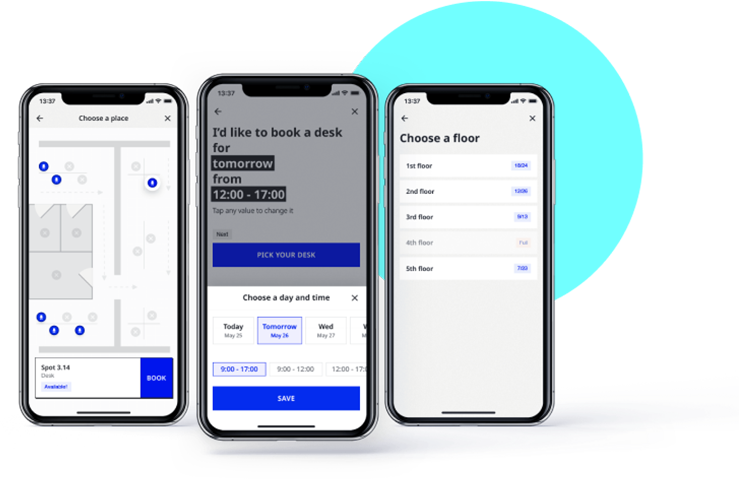Many businesses are exploring rotation plans as a part of their return to the office. Some employees will be more prepared to return to the office than others. Some have higher health risks than others and would like to remain working from home.
Companies need to rethink their office landscapes to accommodate social distancing and strict hygiene. These concerns will drive a lot of decision-making, making for a whole new work experience.
All this means that it might be time to consider transforming your work environment into an agile workspace.
What is an agile work environment?
Agile work environments are designed with flexibility in mind. They’re laid out to allow the employees to work where they want, how they want. What’s more, employees in agile work setups are “often not constrained by conventional 9-5 work schedules, and they may be free to work remotely,” which is key to post-COVID success.
Some elements of an agile work environment may include:
- Bookable desks, seated and standing
- Bookable rooms
- Lounge-like workspaces
- Outdoor workspaces
- Quiet zones
- Activity zones
- Flexible spaces
Why Agile?
Below are the top six benefits to agile work environments.
Flexibility for remote working
According to Cusman and Wakefield, 78% of employees “want remote working policies expanded and shift to balancing office, home and third places”. With an agile office, employees can meet their team in the office one day and work on their projects from home the next.
Many companies are considering rotational shifts for their back-to-the-office plan, and for some of the employees not comfortable enough to return to the office. Adopting an office design that embraces remote working should be a no-brainer.
Bookable desks and areas that foster social distancing
Rather than having side-by-side cubicles that hardly let employees social distance in the office, agile work environments support bookable workstations. One employee may book a cubicle and another may book a standing desk in another corner of the office. This flexibility allows employees to be as spread out as possible when they return to the office.
Keep in mind, the key to successful desk booking lies in investing in a reliable desk booking app. Not only does Joan offer meeting room booking systems, but also a desk booking app for your back-to-office success.

Improved engagement
Agile spaces create more employee chance encounters. Meaning, employees happen upon each other more often than in traditional office layouts. That tends to generate more employee engagement and innovation.
Additionally, traditional, cubicle-related workspaces seat employees with their departments. Yet, what about project teams? For example, a project may involve one Marketing member, an employee from Legal, some developers, and a Customer Service representative. Agile work environments give these groups the flexibility to work together as regularly as they need to.
Developing trust, transparency, and openness
For an agile office plan to work, employees must be honest and focused, staying on top of their workload and not wasting company time and dollars.
Ultimately, treat employees like grownups and they’ll treat you with the same trust and respect.
Cost-saving with better space utilization
Flexible work environments help companies save on real estate. Even after COVID, employees will still want to work from home here and there, or work from an armchair by the window, work outside with their teammates… Office cubicles may never be consistently full again. Cut back on your real estate by weeding out unnecessary cubicles and offer agile workspaces instead.
Adaptable configurations
COVID caught many companies off guard. Businesses that did not encourage remote working struggled with converting to a fully remote workforce. Adopting an agile office plan makes an office adaptable to changing work conditions.
According to McKinsey & Company, the most resilient companies when COVID hit were the agile ones. Establishing an agile company model now may help your company weather future catastrophes.
Conclusion
There are different levels of agile workspaces: a company that supports remote working yet still houses a traditional cubicle plan is still “agile” to a degree. The question is not should you create an agile work environment, but which agile elements are best for you. Bookable desks? Activity-based spaces? Work-from-home policies?
Implementing agile features into your workplace can improve employee satisfaction, engagement, and make your company more resilient. Now is the time to get the ball rolling.
Want to boost your workplace agility this very moment? Try out Joan Desk Booking App for free.
Insights that keep your office running smoothly
Fresh content on productivity, space management, and the future of work. Perfect for managers, admins, and busy teams.
Join thousands of workplace professionals who already read the Joan blog. Unsubscribe anytime.